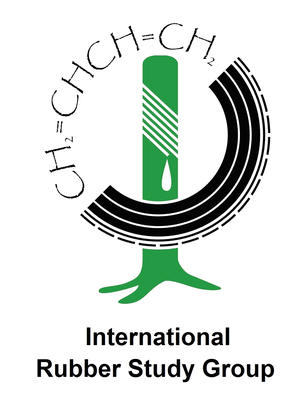IRSG and NTU Singapore collaborate to research rubber sustainability
Singapore – International Rubber Study Group (IRSG) collaborates with NTU Singapore to support research on sustainability in the rubber industry
Natural rubber is a strategic raw material for which there are sustainable alternatives. Natural rubber plantations cover around 14 million ha and produced a total of 13.01 million tonnes in 2019 (IRSG), with a compound annual rate of 1.8% in the last decade. Thailand and Indonesia produced 56% of the world’s total in 2019, with Southeast Asia representing 84% of global rubber production (IRSG, 2021). Rubber production sustains about 40 million people globally, with around 90% of production coming from small plantations. Rubber is used in more than 5,000 products, predominantly in the automotive and aircraft industry, with more than 70% of production directed used in automobile tyres and non-tyre automotive parts.
The main source of natural rubber, Hevea brasiliensis, grows optimally in areas with mean temperatures of 25-28°C and rainfall above 1,500 mm, with conditions in marginal areas being cooler, drier of both. High air moisture content facilitates latex flow, but excessive rain can hinder harvesting.
Soils should be acidic (optimally pH 4.5 to 5.5) and must be well trained to avoid waterlogging, root disease, and dieback.
Climate change will make some traditional areas less favourable because of drought or excessive precipitation, while some marginal areas will become more favourable due to warming. Several studies predict shifts in land suitability in China, India, and Malaysia. Climate change may also benefit future rubber production in currently cooler, humid marginal areas such as Northern Thailand, Laos, Yunnan, and Hainan provinces of China, southern Brazil, northern Gabon, and south-eastern Cameroon. Changes may also favour the cultivation of rubber over palm oil in areas that are becoming drier.
To understand how climate change impacts the rubber industry, Singapore Agri-Food Lab@NTU (SAIL) has enhanced the collaboration with IRSG, a SAIL Partner, to conduct research activities on the economic and social impacts of climate change on the rubber industry.
The collaboration will see research used to re-calibrate the IRSG Statistical Model to predict the supply and demand of natural and synthetic rubber by factoring in the new determinants or changes in this industry (including upstream and downstream across the supply chain).
Based on the new calibrated model, the researchers will propose a white paper on how climate change affects global rubber trading from the supply chain perspective and how it will impact livelihoods and communities.
Says Salvatore Pinizzotto, Secretary-General of IRSG: “More research needs to be done to measure and ensure that natural rubber is produced and distributed with the best sustainable practices. A rigorous knowledge-driven approach will be the main driver for a more effective decision-making process along all the rubber supply chain and to improve the well-being of smallholders’ communities worldwide.”
The collaboration between IRSG and NTU could be further developed after the first year to focus on sustainability in the rubber industry beyond plantation to the supply chain.
Traceability is one of the most challenging aspects of sustainability in the natural rubber supply chain since about 85 percent of the global natural rubber is produced by small independent stakeholders with little interaction with downstream companies.
Furthermore, the natural rubber supply chain is complex and sees the participation of many independent middlemen who buy rubber from small farmers and sell it to processors. Keeping track of the origin of rubber in such a context is, therefore, challenging.
Additionally, it is even more complex for buyers further downstream to assess sustainability performance and the production standards of the independent producers.
As natural rubber is non-perishable, it can be stored for a long time and travel long distances. This means having access to factory production dates and locations may not provide meaningful information related to smallholders and plantations.
Says Research Director of the Centre of Excellence International Trading (CEIT) Assistant Professor Ru Hong, who is also from NTU’s Nanyang Business School: “Rubber is one of the most important commodities in the world, supporting more than 40 million people directly, and much more indirectly. As such, it is important to learn how to ensure both plantations and supply chains are sustainable.”
To support the research collaboration, IRSG has contributed financially as a corporate partner to the NTU CEIT Ph.D. scholarship.

